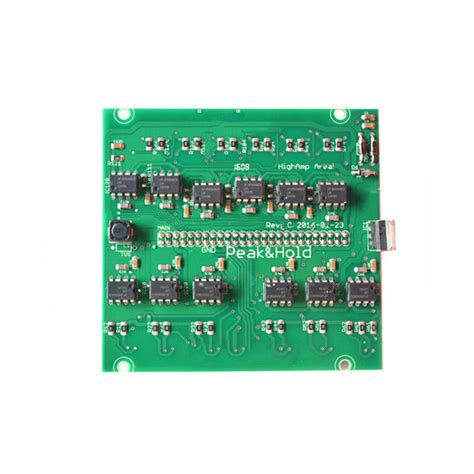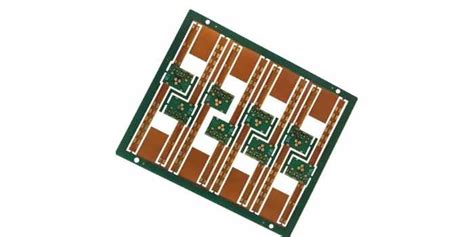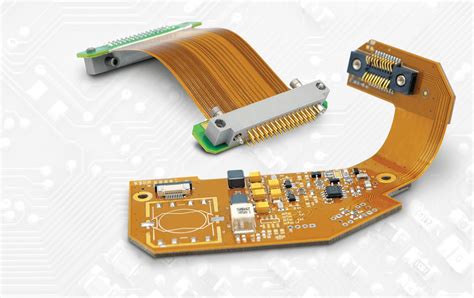Innovative PCB Design Solutions from Leading PCB Manufacturers

Key Takeaways
The landscape of PCB manufacturing has evolved significantly, and understanding the pivotal role of PCB manufacturers in modern electronics is essential for industry stakeholders. These manufacturers provide vital resources that ensure the development of highly efficient and customizable PCB assembly solutions. Recent advancements in technology, including the integration of smart materials and automated production processes, have streamlined PCBA workflows, enhancing overall device performance.
To stay competitive, manufacturers are adopting new methodologies that prioritize sustainability while maximizing efficiency. For instance, the introduction of flexible and rigid-flex PCBs allows for innovative designs that meet diverse industry demands without compromising quality. Furthermore, a strong emphasis on quality assurance standards ensures that all products adhere to strict guidelines, minimizing faults and enhancing longevity.
“Collaboration between designers and manufacturers leads to innovative solutions that drive technological advancements.”
In light of these trends, customization has become increasingly important. Top PCB manufacturers recognize the need to tailor their offerings to suit specific applications, leading to enhanced functionality in end products. By continually embracing new trends and technologies, these manufacturers pave the way for a brighter future in electronics.
| Key Considerations | Description |
|---|---|
| Role of Manufacturers | Essential for efficient PCB assembly |
| Innovations in Design | Use of smart materials & automation |
| Importance of Customization | Tailored solutions for diverse applications |
| Quality Assurance Standards | Ensuring longevity & minimal faults |
In summary, recognizing these key factors will empower businesses to leverage cutting-edge PCB design solutions effectively while partnering with leading manufacturers in the industry.
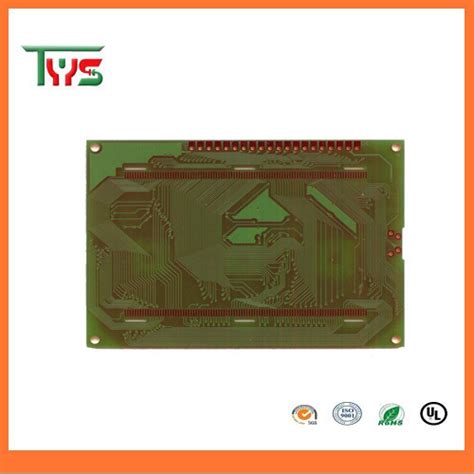
Understanding the Role of PCB Manufacturers in Modern Electronics
In today’s rapidly evolving electronics landscape, the role of PCB manufacturers extends far beyond simple component production. These manufacturers are pivotal in developing Printed Circuit Boards (PCBs) that not only support the basic functioning of devices but also incorporate cutting-edge innovations to meet industry-specific demands. One of the hallmarks of modern PCB assembly is the ability to produce PCBs that integrate complex features, such as miniaturization and increased functionality, while maintaining high standards of quality and reliability. As technology advances, pcb design has also become more sophisticated, which necessitates a close partnership between designers and manufacturers to ensure that specifications are met effectively. Advanced tools and simulation software enable designers to visualize and implement intricate circuits that maximize space while promoting efficient heat dissipation and signal integrity. Additionally, as industries shift towards more environmentally friendly practices, leading PCB manufacturers are adopting sustainable production methods and materials. This not only enhances the overall performance of the electronic devices but also aligns with global sustainability goals. Understanding this synergy between design innovation and manufacturing capabilities is crucial for anyone involved in electronics development today.
Key Innovations in PCB Design: Trends and Technologies
In the rapidly evolving field of electronics, innovative PCB design has become pivotal in meeting the demands of various industries. With advancements in technology, the focus has shifted toward enhancing pcb assembly processes, improving efficiency while reducing costs. One of the most significant trends is the adoption of multilayer PCBs, which allow for more intricate designs without compromising performance. These layered constructions enable manufacturers to incorporate high-density interconnections, accommodating increasingly complex electronic devices. Additionally, leading PCB manufacturers are exploring the integration of flexible substrates, which offer versatility for applications across different sectors, particularly in medical and wearable technologies.
The rise of automation and smart manufacturing also plays a crucial role in optimizing pcba processes. Automated inspection systems ensure that quality assurance standards are upheld throughout production, thus minimizing defects and maximizing reliability. Moreover, manufacturers are leveraging advanced materials such as high-frequency laminates to cater to specific operational needs, particularly in telecommunications and aerospace applications.
Finally, as sustainability becomes more pressing, innovations that prioritize eco-friendly materials and energy-efficient manufacturing methods are gaining traction among top PCB manufacturers. This dedication not only enhances the overall quality of PCBs but also aligns with global efforts toward environmental responsibility. As these trends continue to unfold, it is clear that the landscape of PCB design will keep advancing, paving the way for smarter solutions tailored to meet diverse industry requirements.
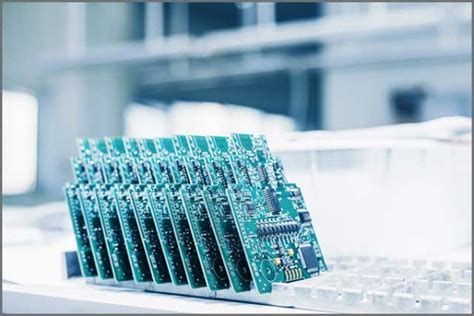
The Importance of Customization in PCB Production
In the ever-evolving landscape of electronics, customization in PCB production has become a critical factor that directly influences the performance and functionality of electronic devices. Customized printed circuit boards (PCBs) are not merely a preference but a necessity for numerous industries, including automotive, healthcare, and consumer electronics. Manufacturers are increasingly focusing on providing tailored solutions that match specific requirements while addressing challenges related to size, shapes, and component density. This level of customization not only enhances product efficiency but also allows for better integration with existing technologies.
By prioritizing unique project specifications, companies can optimize their pcb assembly processes, improving production timelines and reducing costs associated with mass production of generic designs. Moreover, leading PCB manufacturers leverage advanced technologies and materials to ensure that each pcba meets stringent quality standards. This commitment to quality ultimately fosters stronger partnerships between designers and manufacturers, paving the way for innovative electronic solutions that stand out in today’s competitive market. As customization continues to play a vital role in PCB production, it will be crucial for manufacturers to stay adaptable and responsive to the changing needs of various sectors.
Quality Assurance Standards in PCB Manufacturing
In the realm of PCB manufacturing, ensuring high standards of quality is paramount for delivering reliable PCB assembly and PCBA solutions. Manufacturers employ rigorous testing protocols and adhere to internationally recognized standards to validate the performance and durability of their products. These standards encompass various criteria, including material integrity, signal integrity, and thermal performance, which are crucial in determining the end product’s reliability. With advancements in technology, modern manufacturers utilize methods such as automated optical inspection (AOI) and X-ray inspection to meticulously examine the assembled boards. These innovative techniques allow for early detection of potential defects, significantly reducing the risk of failures in real-world applications. Moreover, manufacturers often invest in continuous training for their teams to stay updated on industry best practices, further enhancing their quality assurance processes. By prioritizing stringent quality checks and adopting cutting-edge technologies, leading PCB manufacturers are able to provide exceptional products that meet diverse industry demands efficiently and effectively.
Integrating Advanced Materials in PCB Design
The evolution of PCB design significantly hinges on the integration of advanced materials, which play a pivotal role in enhancing performance, reliability, and efficiency. As industries continue to demand more from their PCBs, manufacturers are responding by sourcing and utilizing materials that offer improved conductivity, thermal management, and flexibility. For instance, the adoption of high-frequency laminates enables designs that meet the rigorous demands of telecommunications and aerospace applications. By incorporating these state-of-the-art materials, PCB manufacturers can create custom solutions tailored to specific operational environments.
Moreover, advancements in materials science have led to the emergence of flexible PCBs, which provide increased possibilities for innovative designs without compromising functionality. These flexible options are particularly useful in wearable technology where space is limited but robust performance is essential. Notably, enhanced metallic traces can support effective pcb assembly processes and lead to a smoother production workflow by reducing the need for extensive rework and enhancing overall durability.
Additionally, integrating these advanced materials aligns closely with sustainability goals as many manufacturers pivot towards environmentally friendly options that reduce waste while maintaining high functionality. As companies continue to collaborate with top-tier PCB manufacturers, they often find that these partnerships yield significant improvements in product lifespan and overall pcba efficiency. In summary, sophisticated material integration not only enhances the design capabilities but also ensures that the resulting PCBs meet diverse industry demands while paving the way for future technological innovations.
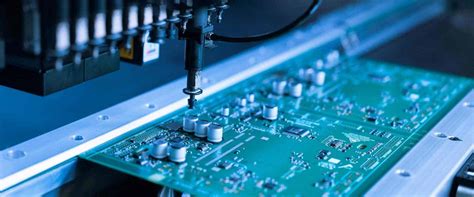
The Future of PCB Manufacturing: Sustainability and Efficiency
As the electronics industry continues to evolve, the future of PCB manufacturing is becoming increasingly intertwined with concepts of sustainability and efficiency. Leading PCB manufacturers are at the forefront of this transition, focusing on innovative practices that minimize environmental impact while maximizing productivity. One significant area of advancement is in pcb assembly, where new technologies streamline processes, reduce waste, and enhance overall efficiency. The implementation of eco-friendly materials in pcb design not only caters to increasing consumer demand for sustainable products but also ensures compliance with stringent environmental regulations. Additionally, manufacturers are investing in automation and smart manufacturing techniques that optimize workflow, reduce lead times, and improve the quality of Pcba products. Emphasizing sustainable practices doesn’t just benefit the environment; it also elevates brand reputation and meets evolving market demands. By leveraging cutting-edge technologies and innovative practices, the future looks promising for PCB manufacturing, as it embraces both sustainability and efficiency to meet a broader range of industry requirements.

Case Studies: Successful Collaborations Between Designers and Manufacturers
In the evolving landscape of electronics, collaboration between PCB designers and manufacturers has proven pivotal for achieving excellence in PCB assembly and customized solutions. One standout example is the partnership between a renowned PCB manufacturer and an innovative tech startup that required advanced prototypes for a new wearable device. Through meticulous communication, both parties were able to navigate initial design challenges to deliver a high-quality product. The manufacturer utilized state-of-the-art techniques in PCBA, integrating cutting-edge technologies such as multilayer boards and embedded components. This collaboration not only optimized the performance and efficiency of the wearable device but also allowed for rapid iterations through feedback loops, significantly reducing time-to-market.
Another compelling case involves a large automotive company seeking specialized circuit boards for its new electric vehicle model. The synergy between their in-house design team and their selected PCB manufacturer led to the development of highly durable and customizable PCBs capable of withstanding extreme conditions. By incorporating advanced materials like flexible substrates, the PCB manufacturer ensured that the end product met industry standards while aligning with sustainability goals. These successful collaborations highlight how effective partnerships can drive innovation, enhance product functionality, and ultimately fulfill diverse industry demands through bespoke solutions in PCB design and assembly.
Navigating Industry Challenges: Solutions from Leading PCB Manufacturers
The landscape of modern electronics is fraught with challenges, and PCB manufacturers play a pivotal role in navigating these complexities. Leading manufacturers are at the forefront of addressing issues such as rising costs, supply chain disruptions, and the need for rapid prototyping in PCB assembly. By leveraging advanced technologies and methodologies, these companies are able to optimize their operations, ensuring that they can deliver high-quality printed circuit boards (PCBs) that meet the ever-evolving demands of various industries.
Innovative approaches such as employing automated processes and implementing real-time monitoring systems enhance the efficiency of pcba production, allowing for quicker turnaround times without compromising quality. Moreover, leading fabrics are integrating advanced materials that not only improve the durability of their PCBs but also address sustainability concerns—a critical factor in today’s market focused on environmental impact. Through strategic partnerships and collaboration with designers, PCB manufacturers like those highlighted in this article exemplify how effective communication can lead to tailored solutions that overcome industry challenges. As technology continues to evolve, the capability to adapt becomes crucial for success in this competitive field.
Conclusion
In today’s rapidly evolving electronics landscape, PCB manufacturers play a crucial role in providing innovative PCB design solutions that cater to a wide array of industry needs. The demand for highly specialized products has led to an emphasis on customization, allowing manufacturers to meet unique requirements. This has transformed the pcb assembly process, incorporating advanced techniques and materials that enhance functionality and performance. Furthermore, the collaboration between designers and leading manufacturers has become paramount, resulting in successful outcomes that showcase advancements in PCBA technologies. As we look towards the future, it is clear that sustainability and efficiency will drive further innovations in PCB production, ensuring that companies remain competitive while adhering to quality assurance standards. By focusing on these elements, the relationship between design and manufacturing will only strengthen, paving the way for groundbreaking advancements in electronic devices.
FAQs
What is PCB assembly?
PCB assembly, or PCBA, refers to the process of soldering components onto a printed circuit board (PCB) to create a functional electronic circuit. This involves various techniques and technologies, each tailored to specific requirements to ensure optimal performance.
What are the benefits of custom PCB design?
Custom PCB design allows manufacturers to create tailored solutions that meet unique specifications, ensuring that the final product is efficient and reliable. With advancements in technology, custom designs can often lead to higher quality and functionality than off-the-shelf alternatives.
How do manufacturers ensure quality in PCB assembly?
Leading manufacturers adhere to strict quality assurance standards, implementing rigorous testing protocols at every stage—from design validation through production and final inspection. This commitment ensures that assembled PCBs meet industry regulations and exceed client expectations for performance and durability.
What materials are commonly used in PCB manufacturing?
The choice of materials for PCBs can greatly influence their functionality. Common materials include FR-4, a flame-retardant glass epoxy, as well as other advanced options like flexible substrates, which are increasingly used in high-tech applications for their adaptable properties.
How do I choose the right PCB manufacturer for my project?
It is essential to consider factors such as the manufacturer’s experience, technology capabilities, customization options, and customer support when selecting a PCB manufacturer. Researching their portfolio and cases of successful projects can also provide insight into their expertise and reliability.


